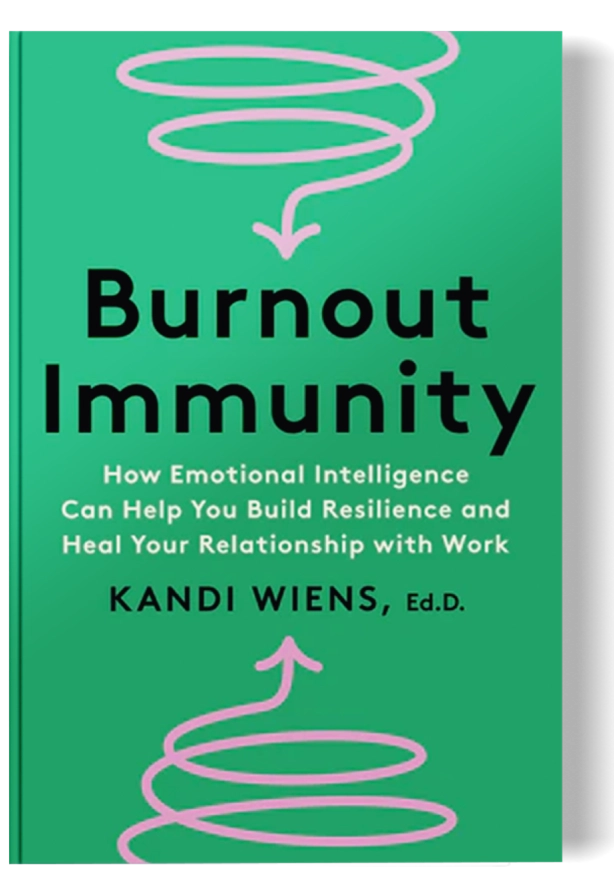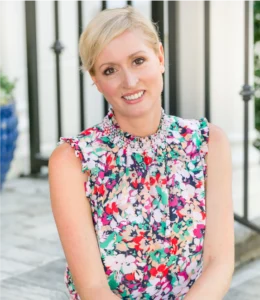Life has a way of reminding us that we’re not in control.
Over the past two years, I’ve experienced more significant life changes than I would have ever imagined possible: divorce, empty nesting as my three sons moved out, launching my best-selling book Burnout Immunity, moving four (yes, you read that correctly) times, falling in love again, and most recently, supporting my sister Jodi through her breast cancer diagnosis.
I’m sharing this not for sympathy, but because I know I’m not alone in having to navigate profound transitions while still showing up professionally. In fact, many of you reached out after reading chapter one of Burnout Immunity to say, “I felt like you were speaking directly to me.” Our stories may differ, but that feeling of being stretched between major life events and work responsibilities is something so many of us share.
What I’ve learned through this (latest) beautiful mess is that maintaining a healthy relationship with work during personal upheaval doesn’t require perfect compartmentalization or “just powering through”. Two years in and I’m still learning that it’s about integration, intentionality, and a whole lot of self-compassion.

When Everything Changes at Once
There’s this pervasive myth that our personal and professional lives should remain separate—that we can (and should) leave our emotions at the door when we log in to work.
But neuroscience tells us this isn’t just difficult—it’s impossible.
Our brains don’t operate in neat compartments. The grief I felt signing divorce papers didn’t conveniently disappear during speaking events. The worry I experience about my sister’s health doesn’t politely wait until after work hours. The joy of falling in love again doesn’t stay confined to evenings and weekends.
And here’s what I’ve come to understand: that’s not a failure or “work life balance” issue, it’s simply being human.
Feeling Everything Without Drowning
One of the most critical lessons I’ve learned is how to allow myself to fully feel the waves of grief, sadness, and loss without getting pulled under by their current.
When I first began experiencing the grief of my marriage ending, I tried to push it away, especially during work hours. I’d catch myself starting to feel sad and immediately redirect: “Not now. Focus on your work.” But that approach only created a pressure cooker of unexpressed emotion that eventually overflowed at inopportune moments.
What I’ve learned instead—and what research on emotional intelligence supports—is that acknowledging and honoring our feelings actually helps us move through them more effectively.
My sister Jodi has been teaching me this in real time. Her strength facing cancer doesn’t mean she’s ignoring her fear or sadness. What she does really well instead (and I so admire her for this!) is acknowledge those emotions while not letting them become the only story. As she told me recently, “I can be scared and strong at the same time.” Her example inspires me to embrace my difficult feelings while still showing up fully for my life and work.
Practical Strategies for Work-Life Integration During Major Transitions
If you’re experiencing significant life changes and trying to maintain your professional footing, here are some approaches that have really helped me:
1. Practice emotional awareness without judgment
I’ve developed a practice of checking in with myself throughout the day, especially before important work interactions. I simply ask: “What am I feeling right now?” Sometimes it’s a complex mixture—pride in my sons alongside the sadness of an empty nest, grief about my marriage alongside excitement about new love.
The key is noticing without judging. I don’t tell myself I shouldn’t feel sad because I have so much to be grateful for. I simply acknowledge: “I’m feeling both grief and joy right now. Both are valid.”
This awareness helps me understand when emotions might be influencing my work decisions or interactions, allowing me to make more conscious choices about how I respond.
2. Create appropriate boundaries (without rigid compartmentalization)
While complete separation of personal and professional life isn’t realistic, thoughtful boundaries are essential. For me, this has included:
- Being selective about what I share at work and with whom
- Creating transition rituals between personal processing and work focus. For me, that’s taking a meditative walk (even if it’s only 5 minutes) before and after work.
- Identifying which work responsibilities truly need my attention during difficult personal periods, and letting others wait
- Learning to say “not right now” more often to create space for emotional processing
The boundaries that serve us best aren’t walls but filters—allowing authentic connection and meaningful priorities through, while protecting our wellbeing and professional effectiveness.
3. Adjust expectations temporarily (without abandoning them completely)
During the most intense periods of transition, I’ve learned to temporarily adjust my expectations for myself. This doesn’t mean letting go of excellence or commitment, but recognizing that capacity fluctuates during major life events.
After my divorce, I reduced my speaking events for two months. When I was in the final push to finish my book while also moving, I simplified my meal plan to create mental space. During Jodi’s chemotherapy appointments, I built a little more flex into my schedule so I could be available any time she wanted to talk.
These acts of self-awareness required my commitment and discipline and they really helped! By temporarily adjusting in some areas, I could show up more fully in the places that mattered most.
4. Find anchoring practices
When everything feels in flux, consistent practices can provide essential stability. Throughout these transitions, I’ve maintained a few non-negotiable anchors:
- A morning reflection practice before checking email
- Regular movement throughout the day (even if just a 10-minute walk)
- Connection with trusted friends who know my full story
- Scheduled unstructured time for processing emotions
These anchors provide continuity and groundedness when everything else seems to be shifting.
5. Leverage the unexpected wisdom of transitions
Perhaps most surprisingly, I’ve discovered that periods of personal transition can actually enhance certain aspects of our work when we approach them mindfully and authentically.
My divorce deepened my empathy for others experiencing major life disruptions. Empty nesting has clarified my priorities in new ways. My sister’s cancer has heightened my appreciation for meaningful work and connection. The joy of new love has brought fresh creative energy to my projects.
Rather than seeing personal challenges as obstacles to work, I’ve learned to recognize how they’re expanding my capacity for depth, empathy, and authenticity in everything I do, including my professional contributions.
The Both/And of Life’s Transitions
One of my core values is love—love for myself, for others, and for the complex journey we’re all on. Living this value during major transitions has shown me that we don’t have to choose between feeling our emotions and functioning effectively. We can do both.
We can feel deep grief AND create meaningful work. We can navigate uncertainty AND make clear decisions. We can experience significant personal change AND maintain professional integrity.
As I continue navigating my own transitions—supporting Jodi through treatment, settling into my new home, deepening new love, celebrating my sons’ independence, and building on my book’s message—I’m learning that a healthy relationship with work looks like presence, awareness, and the courage to bring my whole self to everything I do.
Have you navigated (or are you navigating) major life transitions while maintaining your professional path? I’d love to know what helps you find balance in the beautiful mess of it. The nerdy researcher in me is always curious: What wisdom have you gained through your challenges? Hit reply and let me know—sharing insights makes us all stronger.
Remember (and I’m noting this to myself as well): we don’t have to (in fact, we can’t) move through life’s changes perfectly. But we can move through them authentically, with open eyes and an open heart.
— Kandi



